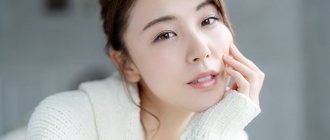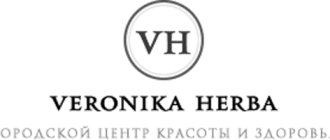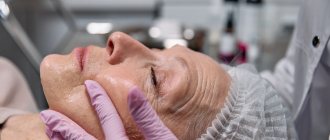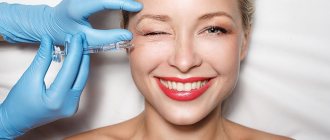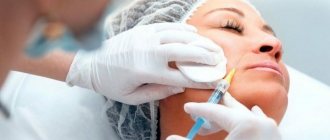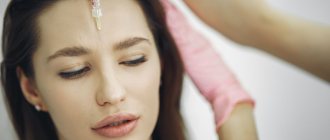Consultation Services Doctors Results Reviews
Expert tested
Natalya Borisovna Zhmurina Director, Chief Physician of “A Clinic” Dermatovenereologist, cosmetologist
Publication date: November 07, 2022
Review date: November 24, 2022
Photorejuvenation is a highly effective hardware technique that helps accelerate cell regeneration and increase collagen production. After the procedure, the skin will look young and fresh for 2-3 years.
Most often, this technology is used when it is necessary to remove age spots, vascular manifestations on the skin, narrow pores, even out complexion and increase skin elasticity. This happens using light waves of different lengths and high intensity.
How the procedure works
This technique allows you to quickly, effectively and comfortably hide the signs of aging. It is based on the effect of pulsed light emitted by a special device on the superficial and deep layers of the dermis. The length of the light wave, as well as the intensity and duration of exposure to radiation, are selected individually by a cosmetologist and depend on the type and severity of skin defects.
At the end of the light exposure, a thin layer of cream is applied to the skin to activate the recovery process. In addition, it protects the radiation-exposed areas from the sun and other negative natural factors, which are quite sensitive immediately after the procedure.
The first results will be noticeable after the first session. If you want to achieve maximum and lasting results, you will need at least 4-5 procedures with an interval of 2-4 weeks. The cosmetologist determines the required number and frequency of therapy sessions on an individual basis.
Phototherapy of the skin can and in some cases even needs to be combined with other cosmetic procedures aimed at improving and preventing aging of the facial skin - all kinds of peelings, injections of hyaluronic acid and vitamin cocktail, mesotherapy, etc.
Apparatus "Lumecca"
The Lumecca laser system is a powerful system with high-intensity pulsed light IPL technology. It is used for IPL rejuvenation, treatment of vascular defects and hyperpigmentation. Thanks to a special attachment, restoration of the natural color and smoothness of the skin is observed after just one procedure. In addition, the device allows you to treat skin of all types.
Pulsed radiation has a complex three-level effect on the main structural elements of the skin: water, melanin and hemoglobin. The latter absorbs high-intensity light, which ensures correction of vascular defects and normalization of dermal cell function. When interacting with melanin, IPL allows you to eliminate areas with pathological pigmentation. In addition, thanks to this method, water balance is restored and the synthesis of collagen fibers is accelerated. This manifests itself in the complete smoothing of fine wrinkles, narrowing of pores, a lifting effect, and a more youthful and radiant appearance of the skin.
The Lumecca device eliminates in 1-3 sessions:
- hyperpigmentation (brown and red spots);
- various damage from UV radiation;
- expansion of capillaries (rosacea);
- spider veins;
- freckles.
The Lumecca attachment is suitable for all areas of the face and body, even such sensitive ones as the neck, hands and décolleté. The results of the treatment appear after the first session, and 2-3 repetitions make the skin healthier, younger and more radiant. A course of several procedures is the key to a noticeable and prolonged effect. In the case of vascular problems (rosacea, “stars”), improvement is observed after 2 weeks.
Stages of implementation
Before a phototherapy session, the general state of health must be assessed. This is necessary to identify the full range of indications and possible contraindications to the use of this technique. In the absence of the latter, the cosmetologist begins to perform manipulations.
Skin phototherapy is carried out in 4 stages:
1. The specialist applies a gel to the areas exposed to radiation, which protects the skin and soft tissues from overheating.
2. The patient puts on special tinted glasses to protect the eyes from the bright light generated by the device.
3. The cosmetologist acts on problem areas with pulsed light.
4. At the end of the procedure, the specialist applies a special cream to the skin, which promotes rapid healing and restoration of the skin.
The duration of the session is no more than half an hour, on average - 7-9 minutes.
FAQ
Question: How many photorejuvenation procedures are required?
Answer: For most people, 3-7 sessions of facial photorejuvenation are enough to get the maximum possible effect from this procedure. However, only your cosmetologist will determine the exact number of procedures.
Question: How often can photorejuvenation be done?
Answer: The break between sessions is usually 7-10 days. It is advisable to carry out the procedure itself once a year - or as recommended by a doctor.
Question: How will you feel during the procedure?
Answer: During the procedure, you may feel warmth and slight tingling of the skin. Special pads protect your eyes from light flashes. The session lasts for half an hour.
Question: How long does it take to notice the first effect?
Answer: Already the first photorejuvenation procedure will give an effect, and subsequent ones will consolidate the result for a long time. A full course usually consists of 3-7 sessions, the number of which varies individually. It depends on the condition of the patient’s body and the effect you want to achieve.
Question: How long will the effect last?
Answer: Photorejuvenation is a highly effective procedure. After completing the full course, the effect lasts for 2-3 years.
Question: Is it possible to do photorejuvenation for teenagers to cope with acne or freckles?
Answer: Yes, photorejuvenation can be done even for young patients who develop acne and enlarged pores during hormonal changes in the body. Exposure to light will dry out the skin and smooth out any unevenness. The light exposure technique will also get rid of freckles if they cause aesthetic discomfort.
Question: Is photorejuvenation really capable of permanentizing the effect of Botox?
Answer: Photorejuvenation does not affect the effect of botulinum therapy in any way - it neither weakens nor enhances it.
Indications and contraindications
Any intervention, including even such gentle and proven cosmetological techniques as skin phototherapy, is associated with a certain health risk.
The main conditions for which the use of this technique is indicated
- acne;
- congenital and acquired age spots;
- freckles;
- age-related skin changes (wrinkles, sagging, decreased tone);
- spider veins (dilated capillaries);
- very dry skin;
- uneven skin color;
Before the procedure, a detailed consultation is carried out, during which the patient is informed of the possible risks
Main contraindications to skin phototherapy:
- age less than 16 years due to hormonal instability in adolescents;
- pregnancy and lactation;
- fresh tan obtained naturally or by regularly visiting the solarium for 3 months;
- glaucoma, cataracts and other intractable and chronic diseases of the visual organs;
- allergic dermatitis, psoriasis and other chronic infectious and inflammatory skin diseases;
- mental disorders;
- taking antibiotics;
- oncology;
- acute or chronic hypertension (grade IIa and above), heart failure;
- diseases of the thyroid gland and changes in thyroid background.
It is extremely important to tell your cosmetologist about any acute and chronic diseases that can, at a minimum, reduce the effectiveness of the procedure, or, at a maximum, cause serious side effects.
Result
After a course of photorejuvenation, pigment spots, acne, acne, capillary networks go away, complexion and skin turgor improve, and in the long term, epidermal cells are renewed.
However, it should be understood that with the help of phototherapy it will not be possible to lift the skin, restore the volume of the cheekbones lost with age, eliminate deep nasolacrimal and nasolabial folds, gravitational ptosis and “jowls”. Also, during photorejuvenation, the areas around the eyes are not affected due to the risk of corneal burns. If these areas require additional attention, you should choose a different treatment method.
Advantages and disadvantages
Compared to most other cosmetic procedures of a similar nature, skin phototherapy allows you to get rid of many skin defects with a minimum number of side effects.
Its main advantages:
- minimal trauma;
- absence of scars after exposure;
- complete skin restoration within 3 days (in most cases);
- high performance;
- absence of unpleasant sensations during the session and after;
- pronounced effect that lasts for 3-5 years;
- the ability to lead a normal lifestyle immediately after the session without limiting social contacts.
The list of shortcomings is insignificant, especially in light of the above advantages. These include:
- short-term and mild discomfort immediately after the session, expressed in swelling, hyperemia, slight itching
- ban on the use of decorative cosmetics for 3-5 days;
- low likelihood of developing photodermatosis and skin hypersensitivity
Does photorejuvenation help get rid of acne?
Pimples (acne) are an inflammatory lesion of the skin that develops as a result of damage to the sebaceous glands and hair follicles. The pathology has a polyetiological structure; its occurrence is provoked by the following factors:
- excessive secretion of sebum - a favorable environment for the development of bacterial flora;
- disruptions in the endocrine system
- individual genetic characteristics;
- climate specifics (increased dryness or, conversely, atmospheric air humidity).
Phototherapy of the facial skin does not regulate the secretion of sebum, but it can somewhat reduce its amount and destroy pathogens in soft tissues. Any inflammation in the areas of intended impact is an absolute contraindication to the procedure.
Are burns possible after photorejuvenation?
The likelihood of burns is minimal, but it cannot be completely excluded. It is worth noting that this side effect most often occurs when contacting an inexperienced specialist, who may make the following mistakes:
- incorrect selection of power and wavelength of the device;
- performing the procedure in the presence of obvious contraindications (a fresh tan, an active inflammatory process or an open wound in the treatment area are especially dangerous);
- incorrect selection of protective agents that are applied to the skin before and after the procedure.
By contacting the TORI clinic, you can be completely confident in the professionalism of our employees and excellent results!
Immediately after the session, there may be slight redness of the skin, which will disappear without any trace after a few hours.
Preparatory activities
To prevent the development of complications after the procedure, doctors at our clinic recommend stopping tanning in any way 14-30 days in advance. You should protect your skin from exposure to UV rays, even if you are not going to the beach or solarium specifically for this. Cosmetics can help you.
You also need to stop taking for a month:
- non-steroidal anti-inflammatory drugs with antiplatelet properties;
- antibiotics;
- retinoids.
Nothing complicated. There are no other restrictions.
At what age is it better to do photorejuvenation?
An absolute contraindication is age under 16 years. Any traumatic effects on a teenager’s skin, combined with sudden changes in hormonal levels, can trigger the development of allergies, autoimmune diseases and even melanoma.
At the age of 17-25 years, any cosmetic defects are often perceived very painfully by young people. However, in the vast majority of cases, they are, albeit unpleasant, but temporary, and do not pose a danger to appearance in the future.
It is worth using skin phototherapy from at least 25-28 years of age, and according to foreign experts - even from 35 years of age.
At the age of 56 years and older, cosmetic defects are almost irreversible due to natural destructive changes in the skin, facial muscles and subcutaneous fat. In this case, phototherapy will at best give an insignificant and short-term result.
Otherwise, the light wavelength and intensity of the device do not depend on the patient’s age and are determined solely by the specifics and severity of the cosmetic defect.
conclusions
Unfortunately, many cosmetologists and clinics, acquiring their own websites and other Internet resources, are increasingly misleading potential patients about certain procedures. There is no such thing as “laser photorejuvenation”, and you must remember this. This term is equivalent to mixing photoepilation and laser hair removal. And if you are offered “laser photorejuvenation” instead of laser rejuvenation, know: either this clinic does not have varied equipment and is deliberately confusing you with definitions, or, even worse, the cosmetologist himself does not understand the topic.
Striving for a positive result and health safety, choose a good cosmetologist and a clinic with licensed equipment.
Optimal number of sessions
The composition and duration of the course depend on the type and severity of cosmetic defects and are determined by a cosmetologist in each case individually. To remove local changes (spider veins, age spots), 1-2 procedures are sufficient. When eliminating wrinkles, preventing the appearance of acne in the future, or correcting sagging skin, 3, 6 or even 10 visits to a specialist may be required.
There must be a certain interval between sessions. On average, it ranges from 2 to 4 weeks and is determined individually by a cosmetologist.
Is it possible to drink alcohol during the course of procedures?
Alcoholic drinks are contraindicated 3-4 days before the session and for 4-5 days after. Ethyl alcohol promotes dehydration of the body. Due to moisture deficiency, cells become overdried and partially destroyed.
In addition, against the background of dehydration, the degree of traumatic exposure to light waves increases significantly, which increases the likelihood of post-procedural complications. Also, consuming even very small doses of alcohol can negatively affect the effectiveness of the treatment.
Follow-up skin care
For 3-4 days after phototherapy of the face, it is necessary to follow a special regime, which involves:
- complete cessation of smoking and drinking alcohol;
- drink plenty of fluids - at least 2-2.5 liters of fluid per day (preferably clean water);
- refusal to visit the steam room;
- refusal of natural and artificial tanning;
- systematic application of sunscreen and moisturizers.
Following simple rules of skin care after surgery is the key to quick recovery, absence of complications and significant long-term results!
Photorejuvenation is a simple and effective procedure that allows you to quickly and without negative consequences eliminate the most common cosmetic defects on the face and increase the attractiveness of your image.
Before undergoing it, it is recommended to visit a doctor in order to identify possible contraindications that can increase the risk of side effects several times.
